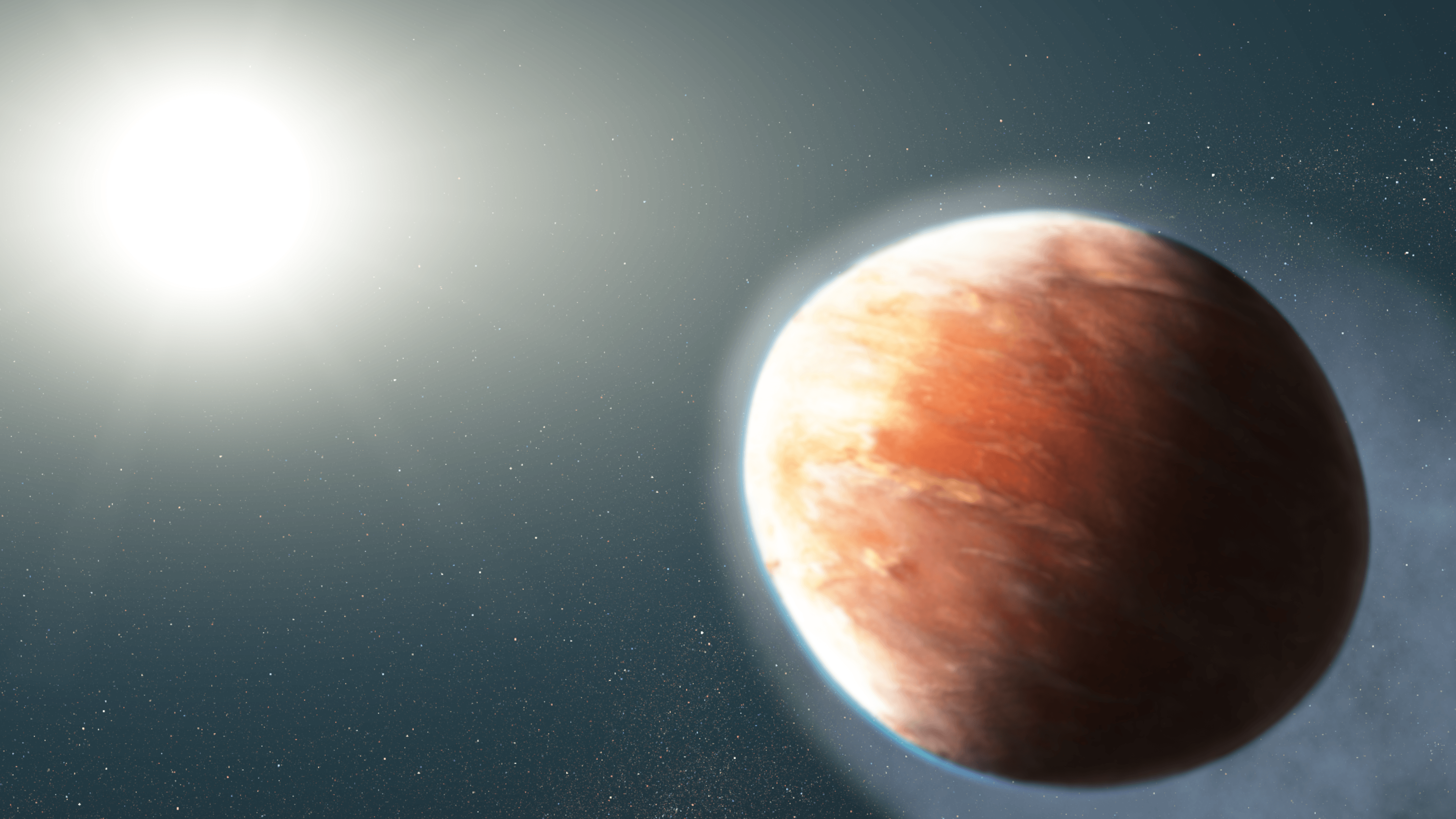It’s no secret that space hosts celestial bodies of various shapes and sizes. However, a newly-discovered football-shaped planet is especially spectacular. It offers insight into how gas giants like hot Jupiters migrate so close to their host star.
The football-shaped exoplanet is called WASP-121b and is classified as a hot Jupiter. The planet is an extremely hot gas giant located close to its host star, which causes heavy metals to vaporize and escape its atmosphere into space. The strong gravity caused by its close proximity to the host star is also responsible for its football shape.
The team of researchers who made the discovery used NASA’s Hubble Space Telescope to detect the gas-escaping football-shaped planet, making it the first observation of a hot Jupiter from which metals vaporize. Their findings were published in the Astronomical Journal.
“This planet is a prototype for ultra-hot Jupiters. These planets are so heavily irradiated by their host stars, they’re almost like stars themselves,” University of Maryland Professor Drake Deming said in a statement. “The planet is being evaporated by its host star to the point that we can see metal atoms escaping the upper atmosphere where they can interact with the planet’s magnetic field. This presents an opportunity to observe and understand some very interesting physics.”
Although their classification contains the word “hot,” these gas giants have cooled down inside to condense heavier elements such as metals due to their dense gas atmosphere. However, WASP-121b is different because it orbits so close to its host star that its upper atmosphere reaches up to 4,600 degrees Fahrenheit.
“Heavy metals have been seen in other hot Jupiters before, but only in the lower atmosphere,” lead researcher David Sing of Johns Hopkins University said. “With WASP-121b, we see magnesium and iron gas so far away from the planet that they’re not gravitationally bound. The heavy metals are escaping partly because the planet is so big and puffy that its gravity is relatively weak. This is a planet being actively stripped of its atmosphere.”
The team used the imaging spectrograph on the Hubble Space Telescope to detect traces of the ultraviolet light signature left by magnesium and iron as they vaporize from the football-shaped planet. They can be seen as they escape the planet’s atmosphere as it passes by its star.
This discovery also add to previous research suggesting that planets lose their primordial atmospheres and shrink as they develop. The atmospheres of younger planets consist mostly of hydrogen and helium, which are the most abundant elements in the universe. However, as planets migrate towards their sun, they lose their atmosphere as gas burns off and escapes.
“The hot Jupiters are mostly made of hydrogen, and Hubble is very sensitive to hydrogen, so we know these planets can lose the gas relatively easily,” Sing said. “But in the case of WASP-121b, the hydrogen and helium gas is outflowing, almost like a river, and is dragging these metals with them. It’s a very efficient mechanism for mass loss.”
The researchers believe that the upcoming James Webb telescope will be perfect for observing the football-shaped planet and other gas giants with fascinating atmospheres. NASA’s telescope is scheduled to launch in 2021 after several delays.





